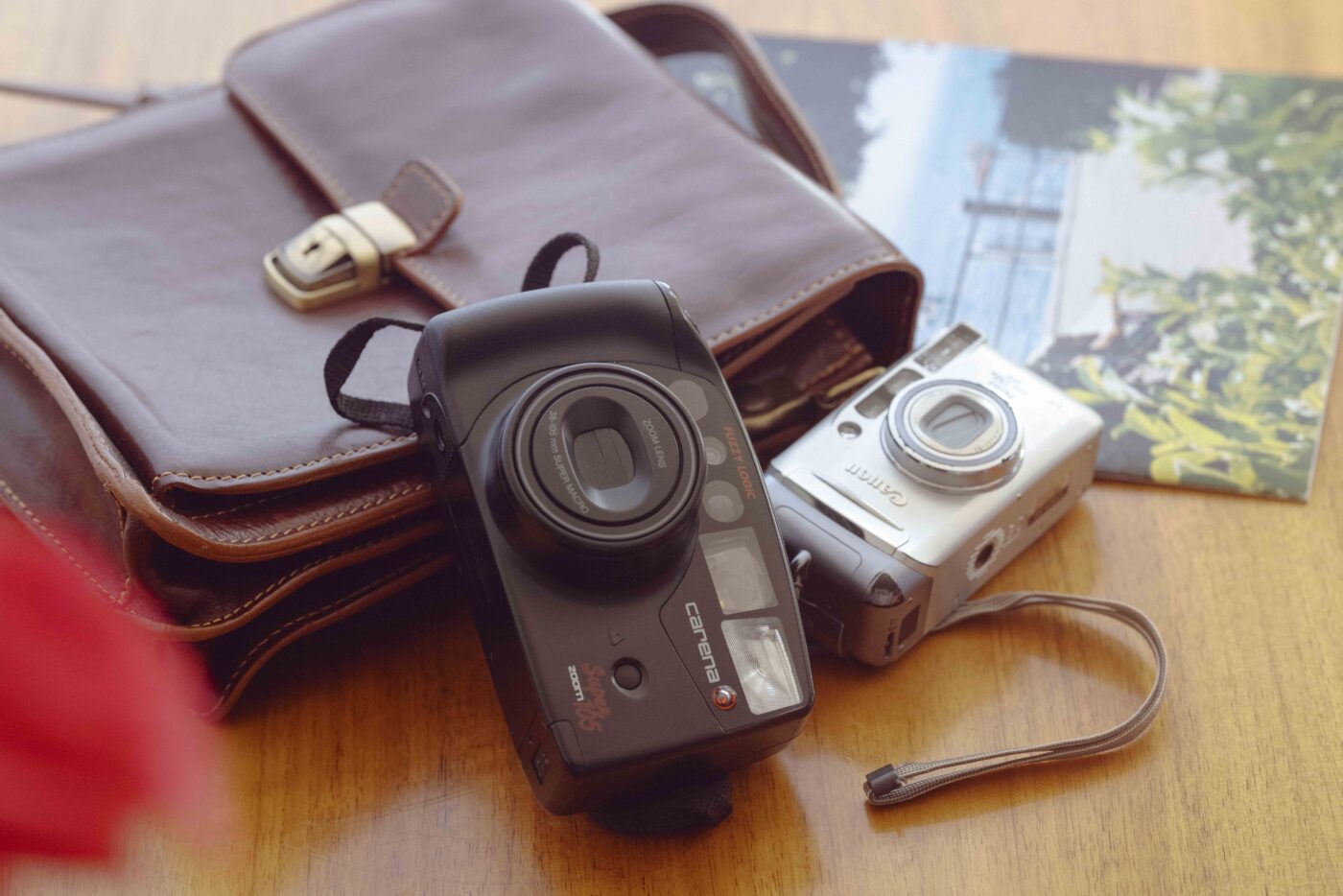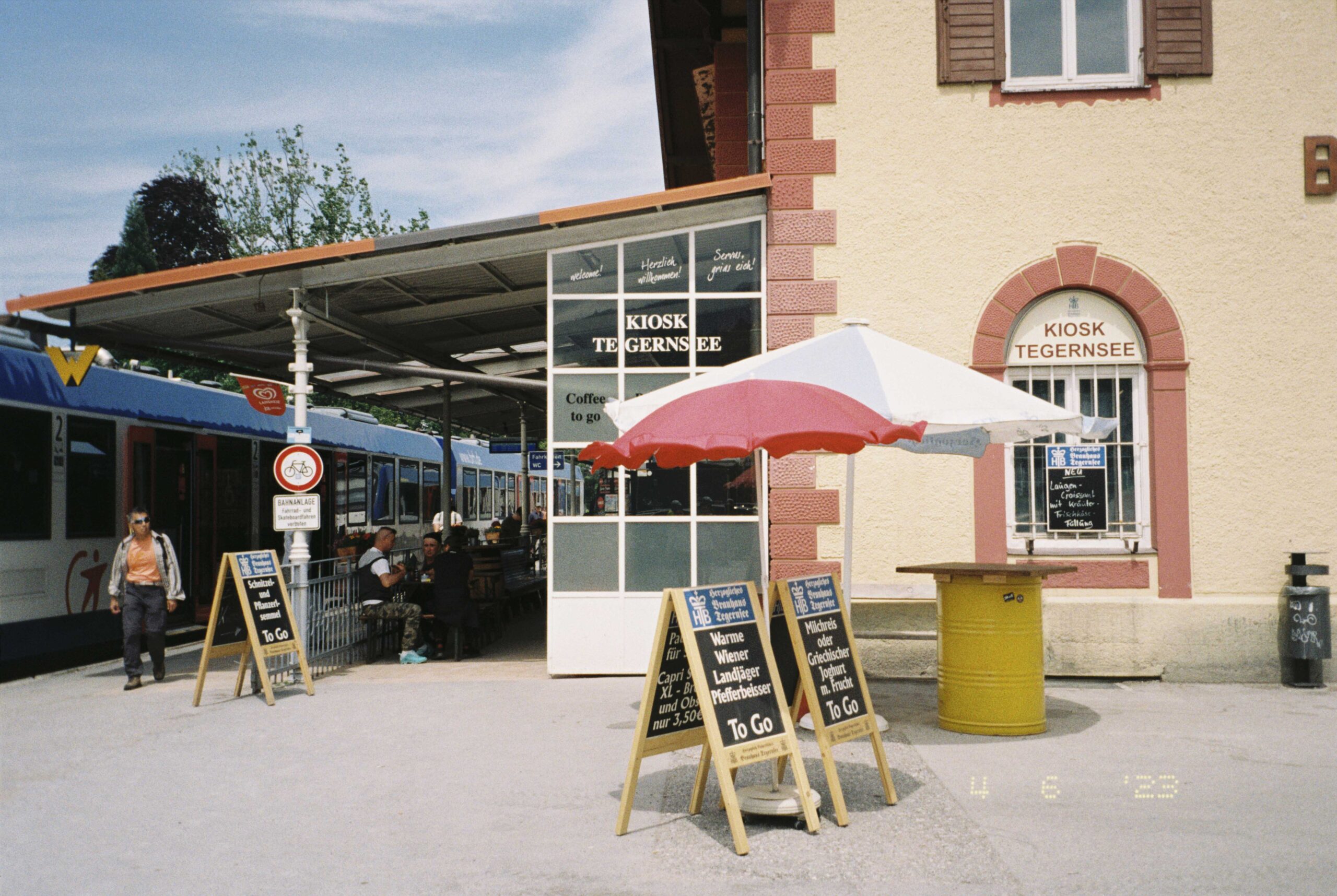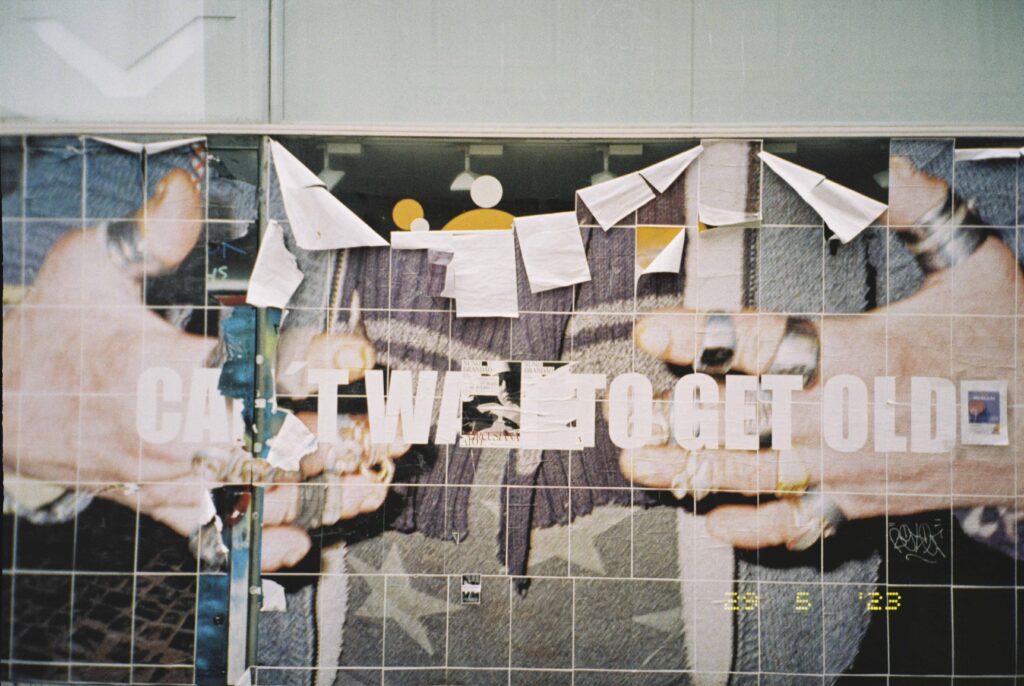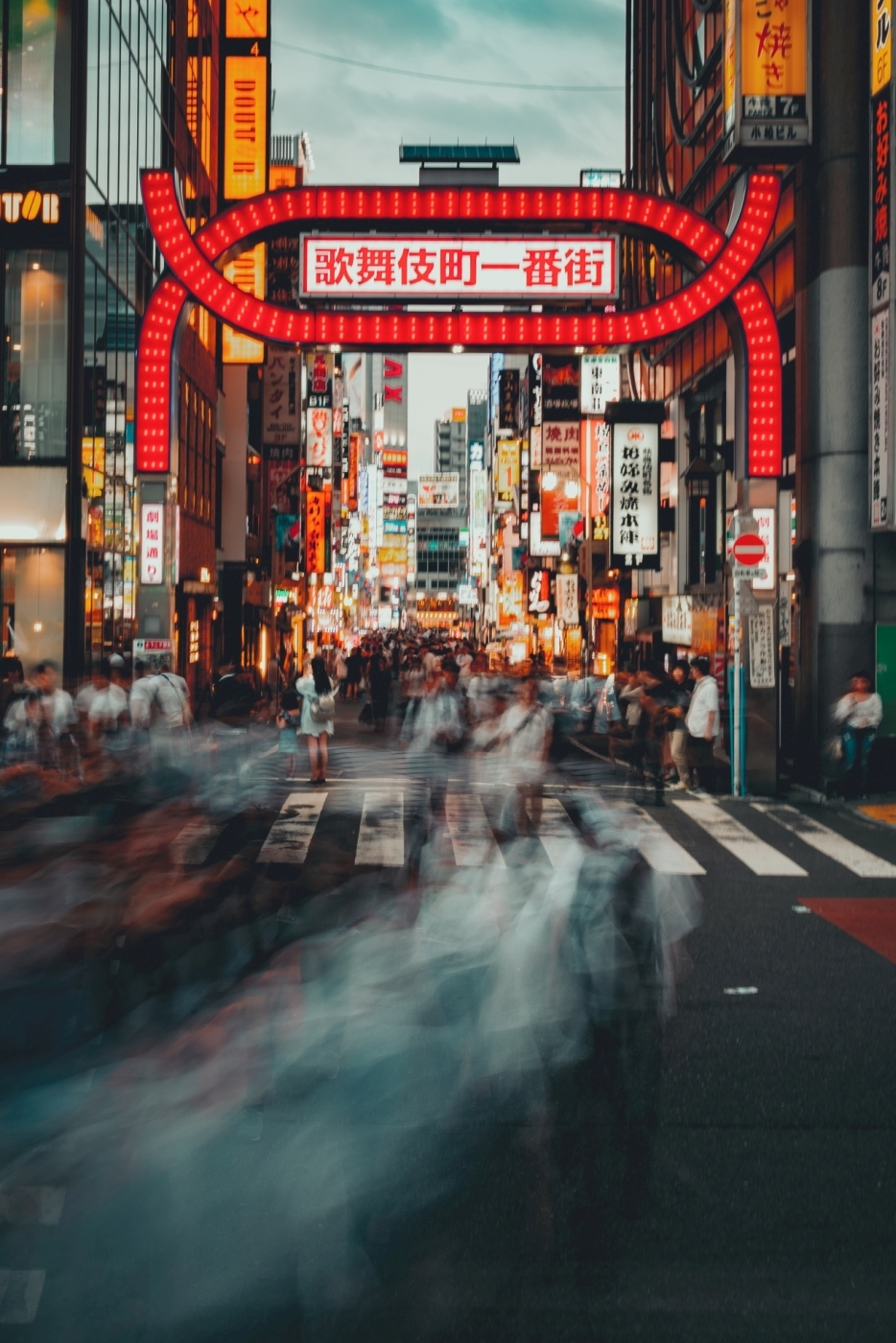Why point and shoot cameras will survive us all

Having just written about Ragefinder cameras and the highly sought-after Leica M system, this time I’d like to talk about film cameras that can be found at the completely opposite end of the price spectrum: point and shoot cameras. Although the systems do have one or two things in common, but more on that later.
The name says it all, because with this type of camera you don’t have to do much except framing your subject and pressing the shutter. The success of these cameras lies precisely in this simplicity and they are still the best-selling 35 mm cameras, or are the only type that has been or is consistently produced (next to the Polaroid camera, which can also be described as a point and shoot).
Sort lika a evergreen of film cameras so to speak. Whereby point and shoot film cameras of the last decades were almost exclusively made of plastic and accordingly came along less high-quality like their higher-quality mechanical models, from the last millennium.

An exception to this, however, are point and shoot cameras in the digital sector, which were still manufactured to a higher quality standard with metal housings in order to somehow retain a raison d’être alongside smartphone cameras.
Whether plastic or not, point and shoot cameras were one of the main reasons why 35 mm film continued to be available on the traditional consumer market, as it would probably not have been worthwhile for large drugstore chains to develop or offer film exclusively for professional photographers (european perspective here).
Fortunately, this article won’t be as rambling as the one about the Leica M series, so let’s keep it short and simple. Here is an overview:
What makes point and shoot cameras so simple
For a very, very long time, cameras were coupled with a technical hurdle, which became more accessible, with automatic mode and auto-focus, but these modern possibilities often came at a high price (not a metaphor – in fact, simply monetary).
Besides, as is the case with cameras of almost any type, there are so many things you can buy on top to take even better photos. Just like a Barbie or Batman doll always has newly produced accessories that you can invest in endlessly, with most cameras you never know if you already have enough accessories or the right accessories: Point and Shoot is different.

These cameras thrive on their simplicity, there are hardly any accessories, there is no need for additional lenses or flashes since they are not designed for them. Because these cameras had one thing in mind: to be as simple, minimalist in operation as possible and to give little control to its users.
Not that this was a conscious design decision, but rather a result. After all, they wanted to build a camera that was so user-friendly and simple that every picture would be a hit. And that included saving the user from sabotaging their own images by adjusting the camera poorly.
Similarities Between Point and Shoot and Rangefinder Cameras
In terms of price, these two types of cameras have nothing in common at all. From the beginning, point and shoot cameras were marketed to be cheap – rangefinders, not really. Apart from that, both types of cameras had very similar advantages.
Both are very space-saving and compact, after all, the aim was to be as mobile as possible. However, rangefinders with their excellent lenses generally produce better images and are usually more inconspicuous because they don’t attract the attention of an entire bar with their bright flash.

Another thing they have in common is, well, that point and shoot cameras often simply have a viewfinder very closely to a rangefinder. Just as rangefinder cameras don’t have room in the design for a mirror, point and shoot cameras don’t have a mirror built-in, which is rather unnecessary with a single, permanently installed lens.
Point and shoot cameras, however, lack the complete manual focus aspect of rangefinder cameras, and they don’t need it, because they either focus via auto-focus, or freeze everything sharply with a flash.
Before autofocus was even invented though, early point and shoot used a simplified, limited focus method, with three settings options: foreground, background, or midground. Classically marked with the symbols “flower” for details/foreground, “people” for middle ground and “mountains” for background.
Again, the basic idea was to keep the cameras as simple as possible, the option to focus completely manually would have complicated the experience unnecessarily.
Advantages of point and shoot cameras
The clear advantage of point and shoot cameras is their limitation, because these cameras are so easy to use that you can’t go wrong.
The adjustment options leave little room for how the camera will take the picture and the built-in autofocus (or simplified focus) in combination with a flash ensures nice pictures… Almost always, the focus tends to get lost in the background sometimes, but the shots are still well lit.

In addition, due to their simplicity, the cameras can also be produced cheaply and thus affordable, even today, except for a few models that have increased in value due to their special features or collector’s status.
An example of this would be the Rico GR1, a high-quality point and shoot camera with a fast 28mm f2.8 lens where you can adjust the aperture manually. Especially because of the manual aperture, the camera is rather exotic among the relatives and this also has an effect on the price.
Disadvantages of point and shoot cameras
Probably the biggest disadvantage of this system is hidden in the strongest advantages; simplicity and limitation. Point and shoot cameras were hardly marketed to professional photographers, of course they were still being used by them, but the disadvantages of these cameras were more likely to be located on the amateur market.
The most significant shortcoming is probably fixed instead of interchangeable lenses, which cannot keep up with the quality of other systems lenses. Therefore, in situations where you need special glass, such as tilt-shift, ultra-fast, extreme telephoto lenses, which is the case in architecture, sports or wildlife photography, a point and shoot camera is of little use.
In addition, there are few manual adjustment options, which makes demanding photography difficult or simply not possible, studio photography for example or long exposures.

For the most part, point and shoot lenses were simply not marketed to professionals and were therefore not really developed with the aim of compensating for these flaws. It’s a system for the masses, which should have disapeared when the biggest camera revolution of this century came to the market (2024 to date).
How point and shoot survived smartphones
Hardly any other camera system has sold as much as point and shoot, although the digital versions have had a… Yes, a hard time. Nevertheless, the disposable cameras in the DM were no more completely dead than digital, compact superzooms; because here the cameras still had a relevance compared to the fixed lenses of smartphones, a mechanical instead of optical zoom to be precises.
Mechanical zoom means that the camera actually zooms in on the subject. The sensor or the film section used to capture the image remains the same size. With a digital zoom, only a visible area of the sensor is enlarged and only a small part of the sensor is used, meaning that only a fraction of the possible resolution can be used for the quality of the image.

This is why many smartphones have several lenses, one with a five-fold zoom, for example, one with no zoom and one with a wide angle: because digital zoom simply does not deliver good image quality.
Put simply, a mechanical zoom actually zooms in on the subject, whereas a digital zoom only enlarges a visible area of the image. In addition, the sensors of digital point and shoots are naturally larger than those of smartphones and this means better image quality regardless of any zooming in and out.
These quality advantages of digital point and shoot cameras, combined with more setting options than the average smartphone camera, ensured the survival through ambitious amateur photographers.

So much for the digital point and shoot, but why have film variants survived? For the same reason I offer 35 mm film Portraits in the 21th century, because of the charm factor!
The unique style and charm of point and shoot
However, the main reason why these types of film cameras have survived is clearly due to the optics, the classic point and shoot camera works with 35 mm film, which undoubtedly has a very special character.
This, coupled with the fact that practically anyone can produce film photos with this type of camera, gives many of the classic point and shoot images a popular “amateurish” look without having to forego the charm of film.
Especially the overexposed faces from the built-in flash are iconic and don’t have to look good at all, but simply authentic. However, they often look good and there is one or perhaps even several reasons for this.

On the one hand, film works much better when overexposed, film likes too much light – digital sensors, on the other hand, do not. Digital sensors lose a lot of detail very quickly when overexposed, film is much more forgiving and still looks good when overexposed.
On the other hand, film copes much worse with underexposure than digital cameras. However, since point and shoot cameras are more likely to overexpose than underexpose, this shouldn’t be a big problem.
The retro recognition value
Another reason is the recognition value. Many of us remember the film look from our childhood days and whether we like it or not, seeing film images will always evoke a certain nostalgia in us. Excitingly, digital cameras from the early 2000s are also slowly but surely becoming iconic and retro due to the image quality of the old sensors, but that’s another topic… But still, for argument sakes:

The fact is, different cameras have different color profiles, filters, editing programs, contrasts, etc.. A cell phone picture rarely has any recognition value, after all there are countless manufacturers and camera types/screens. The selection of 35 mm films, on the other hand, is manageable.
In addition, the images are not as sharp and that is a good thing. Film practically has a loss of quality compared to digital in terms of detail density and sharpness, at least in the area of point and shoot cameras. Just like a limited dynamic range.

But precisely in these “weaknesses” lies a great strength, namely that less is often more, especially with portraits. Many digital cameras are now sharper than we would like (at least I don’t need cameras that show me my blemished skin pores sharper than I can recognize them myself in the mirror).
Pictures you wouldn’t have taken with your cell phone
I also imagine that the shyness for taking a photo of special moments on film with one of these cameras is simply lower. Not only do most people find this way of taking photos more appealing because the cameras are a bit of an eye-catcher these days, but it’s also a bit more relaxing.
Because with a picture on a point and shoot, you can’t see straight away whether it has turned out well, you can’t take five more until everything looks “perfect” and, above all, you don’t have to worry about what will be done with the picture at that moment or the following ones.
Another aspect is that nowadays we take pictures less and less for ourselves. By that I mean, for example, when we take a photo of something to eat, a view or of friends, they usually end up immediately in some form in an app, sent in a chat or posted on social media. Nowadays, most pictures are just a means to an end rather than an end in themselves. Point and shoot cameras are different.

After all, these cameras are hardly intended for professional use, but simply to capture moments as simply as possible. However, as we usually only get to see the pictures weeks later and they are limited in number, they invite us to take a picture for ourselves or for the moment.
Taking photos for the sake of taking photos
Accordingly, a point and shoot image is often something personal, something that has touched us and an approach to photography that we have completely forgotten in a time when images are so fast-moving and fleeting.
Cell phone cameras are no longer just cameras; they are tools for memorizing products in the supermarket, for promoting a LinkedIn post, for telling our friends where we are in the club. They are increasingly becoming translators, telling us what brand of clothes we are looking at or what kind of screw we’ve in our hands.
Which is why these simple 35 mm film cameras will always be future-proof. Although they are technically almost completely superfluous today – they are emotionally more important and valuable than ever: because experiencing photography as an experience will never get old and will always remain exciting for those who come knocking.
If this excitment comes knocking and you’re ready to dive in, this article about things I wished I’ve had known about film photography might be helpful.





